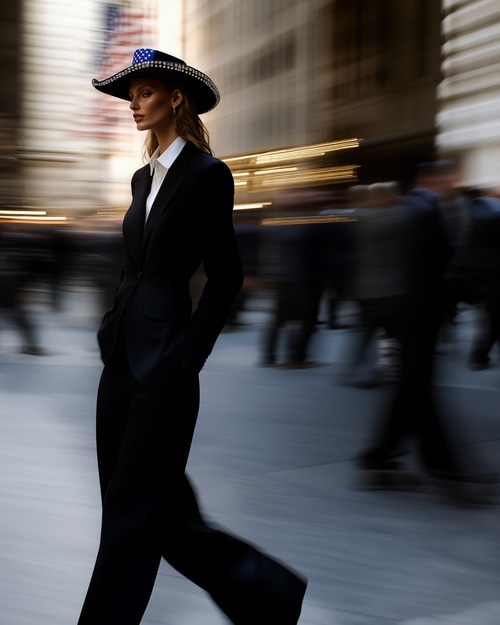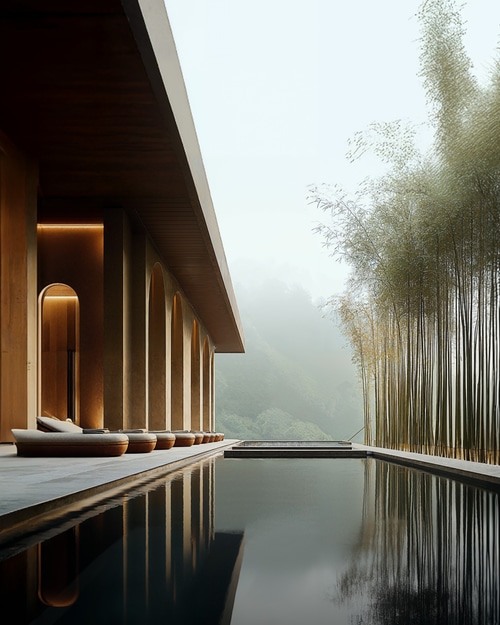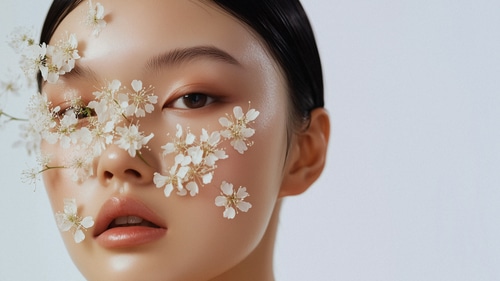

Decoding American Luxury in 2025
For decades, the perception of luxury has been heavily shaped by European maisons, while American brands thrived in the space of aspirational lifestyle. But today, American luxury brands are not just competing — they are defining the very future of luxury itself, fueled by the global industry’s driving consumer base.
According to Barclays research, in 2025 American consumers are set to eclipse Chinese customers to be the main growth driver of luxury goods sales. The bank wrote that President Trump’s tariffs and protectionist measures “could be a positive for America but a headwind for the rest of the world.” Ultimately, in order for brands to win this year, they should have at least one of the following ‘criteria’: “high exposure to high-end consumers, who are more resilient; high exposure to the U.S. cohort; strong pricing power, and solid brand momentum.”
Luxury is rising in the United States – but who is fueling this growth is meaningfully different from who drove consumer goods sales across the 20th century. The Wall Street Journal recently reported that the “U.S. Economy Depends More Than Ever on Rich People”, with the first two sentences: “The highest-earning 10% of Americans have increased their spending far beyond inflation. Everyone else hasn't.” Disposable wealth is becoming significantly more concentrated in a ‘winner-take-all’ market – today the top 10% of earners are now responsible for a record 49.7% of all spending, when a few decades ago they made up 36% of spending.
This evolution tracks cleanly with the rise of luxury in America over recent decades. Throughout the 20th century and up until fairly recently, America was the master of what you might call ‘aspirational mass-market” – think Levis, Calvin Klein, Michael Kors, J Crew, North Face, Patagonia, Kate Spade, Nike, you name it. Even Apple could fall into this categorization – aspirational yet also widely available. The brands that were labeled ‘luxury’ were still an ocean away from the European maisons. They lacked the decades (if not centuries) deep heritages, the scarcity, and often the allure of their overseas counterparts – New York jewelry houses Harry Winston and Tiffany’s are some of the only major exceptions that come to mind.
Across the past two decades, we’ve seen a slow slide towards more true luxury American brands largely via an assist from the clout and craftsmanship gained from working with or for European designers – like Calvin Klein x Raf Simons, or Tom Ford’s rise following his astounding reinvention of Gucci. Streetwear too was key, born in the streets of New York or LA and fueling global trends, and propelling brands and figures like 1994-founded Supreme to partner with Louis Vuitton in 2017 or Dapper Dan with Gucci in 2018. Virgil Abloh was a major part of this evolution, fueling disruption and innovation across the industry.
But now we’re here in 2025, and American luxury brands of all kinds are suddenly thriving. They’re doing so by adopting key strategies – embracing experiential luxury, reinventing American codes and aesthetics, and targeting exclusive, wealthy consumers rather than the masses. American brands are now checking off the crucial elements of what makes luxury ‘luxury,’ and creating a new image of the American Dream while doing so.
MASS MARKET LOOKS TOWARDS LUXURY
Perhaps no American brand could be more defined as a ‘mall brand’ – mass-market, omnipresent - than the GAP. Yet this year the GAP is breaking out of suburbia and turning to luxury, launching GapStudio, a line of premium, sleek designs reinventing the brand’s all-American DNA at a much higher purchasing point. Now mega-stars like Timothée Chalamet are wearing full GAP outfits on the red carpet alongside $80,000 in Cartier jewelry. Anne Hathaway wore the brand too to a hot Rome event for BVLGARI, as did Oscar-winning actress Da’Vine Joy Randolph for the Met Gala, and Cara Delevigne at the buzziest LA party of the year.
The strategy of imbuing popular brands with exclusiveness and luxury styling worked wonders for Ralph Lauren – CEO and president Patrice Louvet sat down with Vogue Business in 2023 to talk about the brand’s luxury pivot aspirations. Two years later their results are beating expectations, with global revenues shooting up 11% in the third quarter of last year.
Sneaker brands like Nike too are benefitting from sliding further towards luxury, via sought-after collaborations with American luxury brand Bode, with columnists at Bloomberg urging on the premiumization strategy.
REINVENT ALL-AMERICAN CODES FOR A NEW AGE
Last week during Fashion Week, the hottest store opening was that of Bode – the American luxury brand’s first store overseas. The warmly lit, cozy store in the 1st arrondissement is full of Americana – fishing rods, vintage furniture, and framed photos of football players. Walk inside and you leave behind Paris and step inside a nostalgic American Dream.
Bode’s website describes itself as an ‘American luxury brand that expresses a sentimentality for the past through the study of personal narratives and historical techniques.’ The brand is steeped in founder Emily Adams Bode Aujla’s childhood in Cape Cod, referencing old American glamour, textiles, patterns, motifs, iconography, and even imbuing far-flung American motifs like Western fringed suede. The designer thinks of her clothes as ‘heirlooms’.
Thom Browne is another American luxury brand seeing strong success, outfitting rising stars like Doechii for the world’s biggest stages. At the heart of Thom Browne too is a reinvention of American motifs, whether it be via the colors red, white and blue, all-American tailoring, or eccentric embellishments and details.
Tom Ford’s new era was unveiled this past Fashion Week in Paris to ecstatic reviews, now under the helm of designer Haider Ackermann. Yet despite Ackermann’s global roots, he was sure to keep his vision of the brand grounded in Tom Ford’s distinct kind of sexiness, confessing to also be inspired by the film American Psycho – quiet luxury is now heightened with delirious American capitalism.
Elder Statesman is another, wildly different take on reinventing Americana – the LA-based luxury brand is inspired by the surfing and rave cultures of ‘90s California for their ultra-colorful, impeccably made cashmere and wool clothes. Flamingo Estate sells another kind of garden-grown California aspiration, as does Chrome Hearts’ with their all-silver, rebellious take on Hollywood glamour, or Amiri with their gleeful remixing of subcultures.
IN AMERICA TODAY, LUXURY IS WHAT YOU WANT IT TO BE
American codes once incredibly conservative or narrow have been exploded open by a new generation of brands and artists – just look at country music, with singers like Chappell Roan or Orville Peck putting out mainstream queer country songs. Classic American motifs are no longer so rigidly defined, and that’s enabling them to become not just accessible to new audiences, but ultra-elevated and luxurious too.
American brands are finding the power to create their own reality and forge their own definitions of ‘American luxury’ in the vacuum of where there were no clear definitions – the Instagram bio for the sleek California-brand Fear of God is simply ‘American luxury.’ Khaite emerged almost fully formed to quick success, worn by top celebrities throughout New York City streets. Even the most luxurious, mainstay European maisons like Hermès now have American challengers, like The Row with their only-increasingly-desired Margaux bag. And industries once totally immune to challengers – like the Swiss mechanical watchmaking industry - are facing sudden competition from niche ultra-luxury American rivals like Jacob & Co, adorning the wrists of those who love all-things-America, like singer Lana Del Rey.
This isn’t even to mention the rise of American luxury in the realm of the experiential and sensorial – like the cuisine, wellness and fitness trends reshaping global expectations in those industries.
Ultimately, at Al Dente we believe there are clear opportunities here – both for investment and diversification from the major European groups and players (see: the The Row’s huge deal last year) but also for non-American brands wishing to put their own spin on Americana and reach and resonate with an ever-growing, ever-important and ever-discerning American clientele. American brands too have urgent stakes to get it right and not let valuable opportunities slip away from them to carve out their own unique perspective on this market.
With tariffs looming and American consumers more powerful than ever, the new American luxury is not just a trend — it’s a paradigm shift that global brands can’t afford to ignore.


